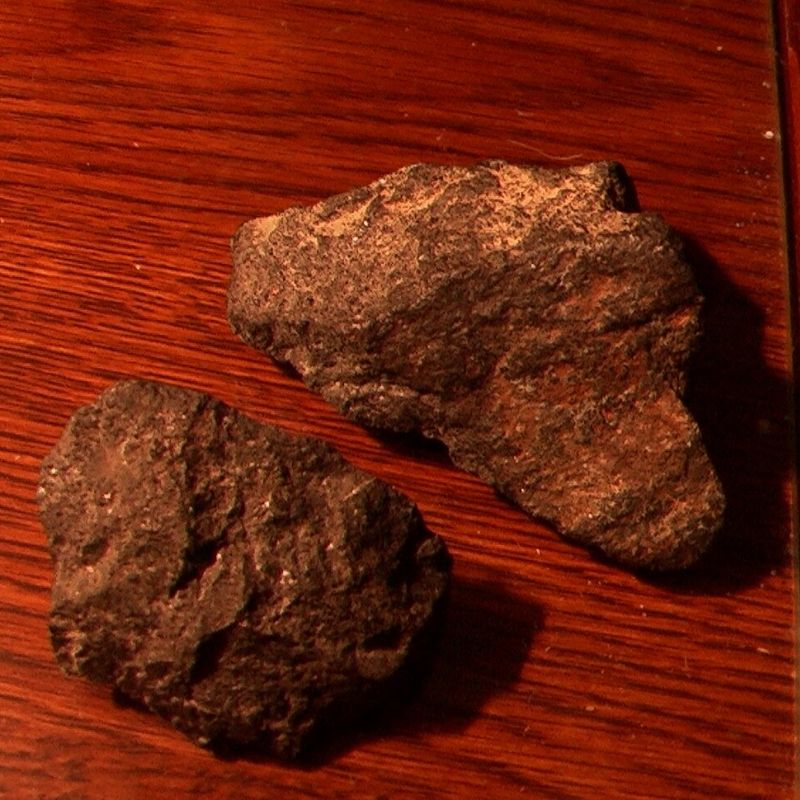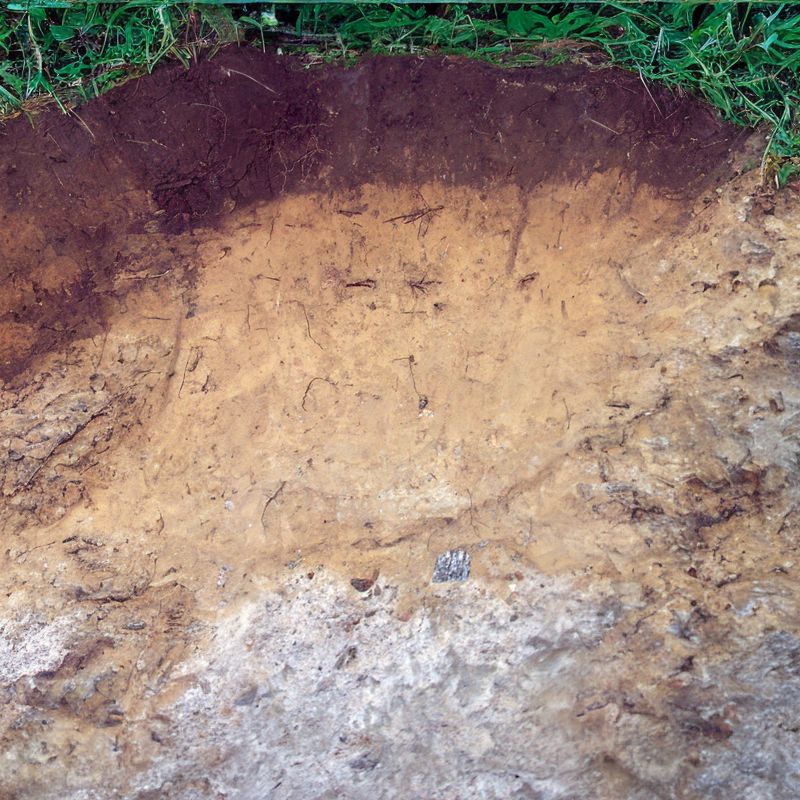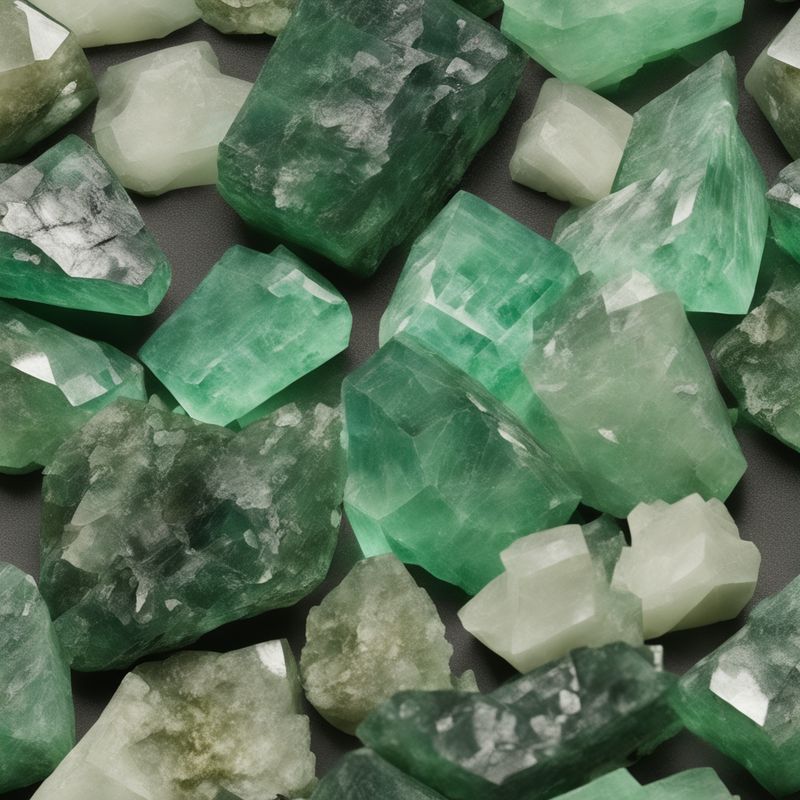Explore the Fascinating History of Rhode Island
Take our Rhode Island Trivia Quizzes for a Chance to Win a 6-Month Subscription to History By Mail!

The History of Rhode Island
Journey Through Rhode Island Trivia
Welcome to our Rhode Island history and trivia page, presented by History By Mail. Join us as we embark on a journey through the captivating past and cultural tapestry of the Ocean State. From the Native American civilizations of the Narragansett and Wampanoag tribes to the arrival of European explorers and the modern era, we'll delve into Rhode Island's hidden gems and challenge your knowledge with entertaining quizzes. Let's uncover the rich history and intriguing trivia of Rhode Island together.
Rhode Island, known as the Ocean State, is a land of historical significance and natural beauty. From the colonial charm of Newport with its historic mansions and maritime heritage to the scenic coastline and idyllic beaches, Rhode Island holds a captivating legacy. Explore the stories of religious freedom, the American Revolution, and the Industrial Revolution, as well as the influential figures like Roger Williams and Nathanael Greene who shaped the state's history.
Join us as we unravel the intriguing history and trivia of Rhode Island, delving into its role as the birthplace of religious liberty in America, the thriving textile industry, and the vibrant arts and culture scene.
Facts about Rhode Island
State Abbreviation: RI
Capital: Providence
Name Origin: Experts don’t agree on the source of Rhode Island’s name. One explanation is that explorer Giovanni da Verrazzano compared the land he found to the Greek island of Rhodes, and that inspired colonist Roger Williams to name the colony Rhode Island. Another explanation is that Dutch explorer Adriaen Block called the land Roodt Eylandt, meaning “red island,” because of the red clay at its shore—and the name later evolved into Rhode Island.
Nickname: The Ocean State
Statehood: May 29, 1790 (13th State)
State Motto: “Hope”

Rhode Island's Flag
The State Flag of Rhode Island features a white field with a gold anchor in the center. Above the anchor is a blue ribbon with the state motto "HOPE" in gold letters. Surrounding the anchor are thirteen gold stars representing the original thirteen colonies of the United States. The flag is simple yet meaningful, symbolizing Rhode Island's maritime heritage and its role as one of the original thirteen states.
The anchor on the flag represents hope and is a symbol of stability and strength. It reflects Rhode Island's history as a seafaring state, highlighting its importance in maritime trade and navigation. The blue ribbon with the state motto "HOPE" emphasizes the enduring spirit of optimism and resilience that has characterized Rhode Island throughout its history.
The thirteen stars on the flag represent the unity and solidarity of the original thirteen colonies that formed the United States. They serve as a reminder of Rhode Island's integral role in the founding of the nation and its commitment to the principles of liberty, independence, and self-governance.
Rhode Island's Great Seal
In 1647, the Rhode Island legislature embraced an anchor as the emblem of hope on its colonial seal. By 1664, the state motto "Hope," an anchor cable, and the official name of the colony, Rhode Island and Providence Plantations, were incorporated. Subsequent alterations have been minimal, such as the anchor cable's removal in 1892. In 2020, due to the association between the term "plantations" and slavery, "Providence Plantations" was removed from the state's official name. Accordingly, the seal underwent revision to reflect this change.
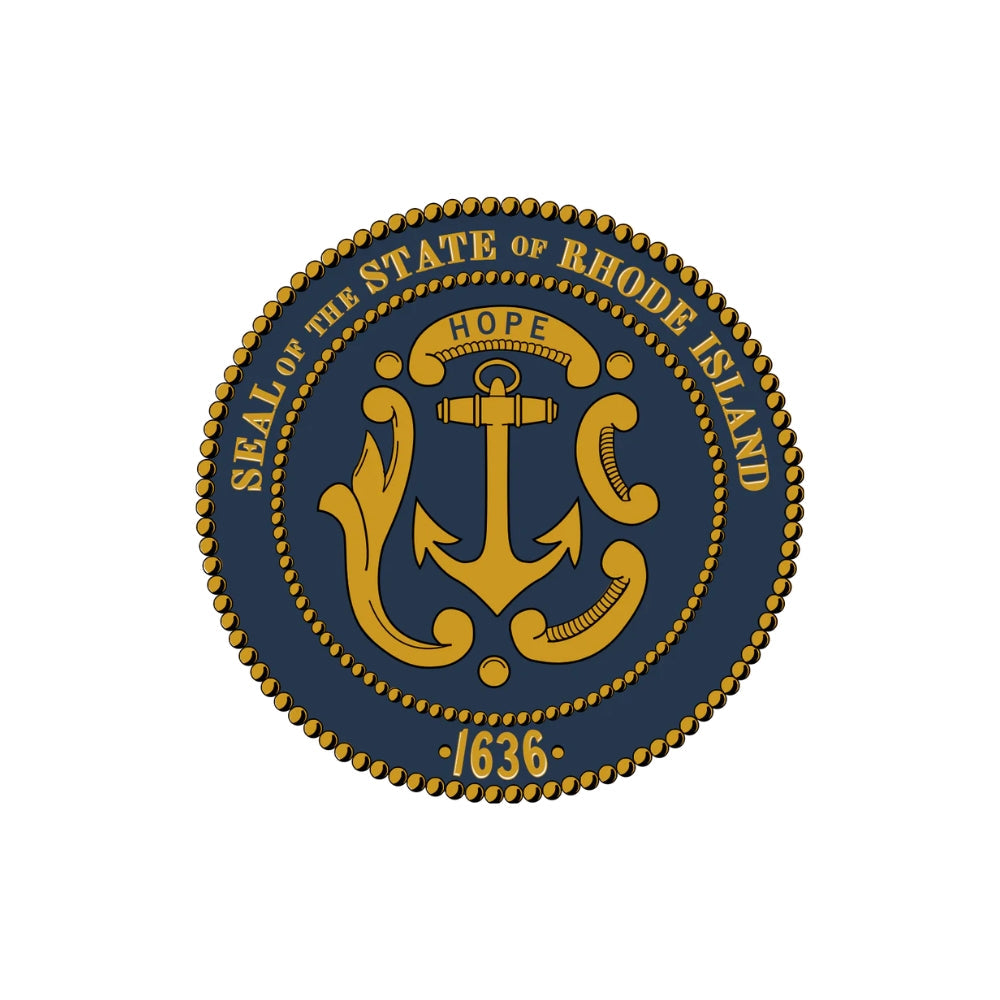
--- State Trivia #1 ---
History of Rhode Island
Rhode Island, also known as the Ocean State, may be the smallest state in the United States, but its historical significance, cultural contributions, and natural beauty make it a captivating destination. With a rebellious past as the first colony to declare independence from England in 1776, Rhode Island has played a pivotal role in American history. Today, it has evolved into a thriving state with a strong service economy and a focus on tourism, education, and health services.
Rhode Island, officially known as the State of Rhode Island and Providence Plantations, spans approximately 44 miles (77 km) in length and 37 miles (60 km) in width. Despite its compact size, it boasts a dense population of 1,098,163 (2021), making it one of the most densely populated states in the country.
The nickname "Ocean State" is well-deserved, as Rhode Island's coast stretches for more than 400 miles (640 km). While most of the state is connected to the mainland, its name is derived from Aquidneck Island, also known as Rhode Island.
The colony of Rhode Island traces its roots back to 1636 when Roger Williams, a clergyman exiled from Massachusetts Bay, established the settlement of Providence. Williams and other religious exiles founded additional settlements, such as Pocasset (now Portsmouth) in 1638 and Newport in 1639. Religious diversity was a defining characteristic of Rhode Island, as exemplified by the presence of Touro Synagogue, the oldest synagogue in the United States, founded in 1763.
Rhode Island's history is marked by a spirit of independence and progressiveness. Brown University, founded in 1764, became the first American college to admit students of all religions. The state declared independence two months before the colonies at large, in May 1776, and played a pivotal role in the American Revolution. However, Rhode Island's history with slavery is complex, as it was the first state to outlaw slavery but struggled with its enforcement, leading to Rhode Island becoming the largest slaveholding state in New England. The city of Newport thrived as part of the Triangular Trade.
During the Industrial Revolution, Rhode Island emerged as a hub of industrialization, with Samuel Slater's Mill marking the beginning of the textile industry in America. However, this period also brought class disputes, leading to events like Dorr's Rebellion in 1842, which eventually expanded voting rights in the state.
In the Gilded Age, Rhode Island attracted wealthy industrialists who built extravagant estates in Newport, solidifying the state's reputation as a summer destination. However, after World War II, the state faced economic challenges, with a decline in population and issues with organized crime. In recent decades, Rhode Island has experienced a revitalization, focusing on cultural sites, tourism, and a thriving arts community.
For visitors, Rhode Island offers numerous points of interest, including the Roger Williams National Memorial in Providence, Samuel Slater's Mill in Pawtucket, the General Nathanael Greene Homestead in Coventry, the historic mansions of Newport, and the scenic Block Island.
Geographically, Rhode Island is located on the east coast of the United States, encompassing Aquidneck Island and connecting to the mainland via several bridges. It is bordered by Massachusetts to the north and east and Connecticut to the west, with its southern boundary defined by the Rhode Island Sound and Block Island Sound. The state features a Coastal Lowland with sandy beaches and a picturesque coastal region, as well as the Eastern New England Upland in the northwestern area, characterized by rolling hills and the highest point, Jerimoth Hill.
Despite its small size, Rhode Island offers a blend of natural beauty, urbanization, and a rich historical legacy. It remains a sought-after destination, attracting visitors with its stunning coastline, vibrant cities, and a distinct cultural identity shaped by its rebellious past and progressive outlook.
State Symbols
Fun Facts
- The state rock, Cumberlandite, comes from Cumberland, Rhode Island. Made of iron and titanium, it’s slightly magnetic with a silvery sheen.
- Actress Viola Davis, actor and songwriter George Michael Cohan, and record-setting mountain climber Annie Smith Peck were all Rhode Island residents.
- Rhode Island’s Narragansett Bay is famous for its clams. Fried clam cakes, clam chowder, steamers (steamed clams), and stuffed clams are favorite snacks.
- Rhode Island is the smallest state in the United States—only 1,034 square miles.
--- State Trivia #2 ---

Things To Do in Rhode Island
- Explore Historic Newport: Visit the charming coastal city of Newport and immerse yourself in its rich history. Tour the opulent Gilded Age mansions, such as The Breakers and Marble House, which showcase the extravagant lifestyles of America's elite. Take a stroll along the historic Cliff Walk, a scenic path that offers breathtaking views of the shoreline and the mansions.
- Relax on Block Island: Escape to the tranquil beauty of Block Island, located just off the coast of Rhode Island. Enjoy its pristine beaches, picturesque cliffs, and rolling hills. Explore the island by bike or on foot, visit the iconic Southeast Lighthouse, and indulge in fresh seafood at the local restaurants.
- Discover Providence's Creative Side: Explore the vibrant capital city of Providence, known for its thriving arts scene. Visit the Rhode Island School of Design Museum and the Providence Performing Arts Center. Take a walk along the picturesque Waterplace Park, which features a series of illuminated waterways and stunning architecture. Don't miss the Federal Hill neighborhood, known for its Italian cuisine and lively atmosphere.
- Visit the Roger Williams Park Zoo: Spend a day at the Roger Williams Park Zoo in Providence, one of the oldest zoos in the country. Encounter a diverse array of animals, including elephants, giraffes, and pandas. Explore the beautifully landscaped grounds, enjoy interactive exhibits, and learn about wildlife conservation efforts.
- Enjoy Narragansett Beach: Head to Narragansett, a coastal town famous for its beautiful beaches. Relax on the sandy shores of Narragansett Town Beach, known for its excellent surf. Take a walk along the scenic Cliff Walk, which offers panoramic views of the ocean and the stunning mansions along the coastline. Don't forget to sample some delicious seafood at the local eateries.
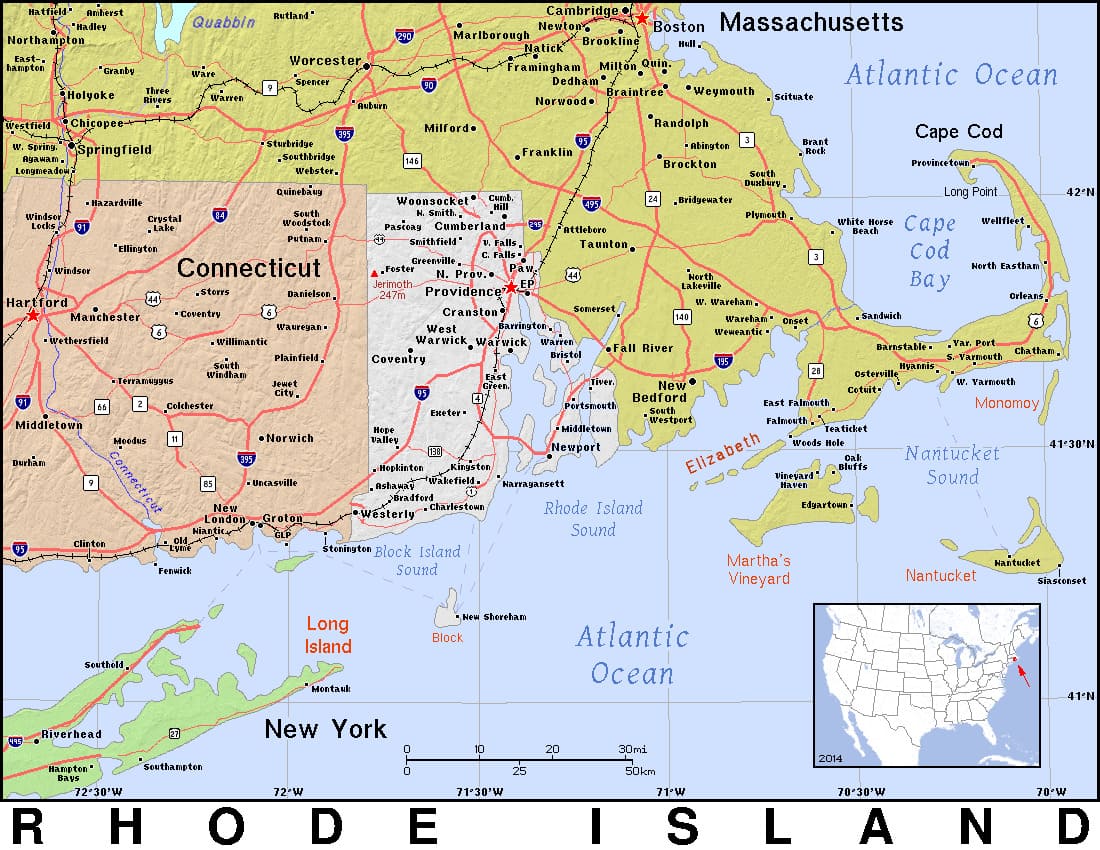
General Map of Rhode Island
Rhode Island, known as the "Ocean State," is a captivating destination located in the New England region of the United States. Renowned for its picturesque coastal beauty, historic charm, and vibrant culture, Rhode Island offers a wealth of experiences for visitors to explore and enjoy.
Famous People From Rhode Island
--- State Trivia #3 ---
FREQUENTLY ASKED QUESTIONS (FAQ) ABOUT RHODE ISLAND
Rhode Island earned its nickname, the "Ocean State," due to its extensive coastline and maritime history. With over 400 miles of coastline, the state's proximity to the Atlantic Ocean has greatly influenced its economy and culture throughout history. From its early days as a hub for maritime trade and shipbuilding to its more recent role in the fishing and tourism industries, the ocean has played a significant role in shaping Rhode Island's identity.
Despite its name, Rhode Island is not just one island; it's actually comprised of several islands and a mainland portion. The name originates from the Italian explorer Giovanni da Verrazzano, who in 1524 referred to an island near the entrance of Narragansett Bay as "Roodt Eylandt" due to its reddish appearance. Later, in 1636, when religious dissident Roger Williams and his followers settled there, they named the new colony "Providence Plantations." Eventually, the colony merged with other settlements to form the colony of Rhode Island and Providence Plantations, which was officially renamed the State of Rhode Island and Providence Plantations in 2020.
Despite its small size, Rhode Island played a notable role in the American Revolution. It was the first colony to officially declare independence from Britain in May 1776. Additionally, the state was home to important military actions, such as the Battle of Rhode Island in 1778, where American forces attempted to dislodge British troops from Aquidneck Island.
Rhode Island's full official name is quite a mouthful: "State of Rhode Island and Providence Plantations." This name reflects the state's historical origins, as it was formed by the merger of multiple settlements, including the original Providence Plantations founded by Roger Williams. In 2020, there was a movement to change the name due to its association with slavery, and a referendum was held to remove "and Providence Plantations" from the official name. The change was approved, making the official name simply the "State of Rhode Island."
Related Resources
- Official Website of the State of Rhode Island: The official website provides information about the state government, services, tourism, and more. Visit: https://www.ri.gov/
- Rhode Island Tourism Division: Explore Rhode Island's attractions, events, outdoor activities, and plan your visit. Visit: https://www.visitrhodeisland.com/
- Rhode Island Historical Society: Learn about Rhode Island's rich history, access archival collections, and discover historic sites. Visit: https://www.rihs.org/
- Rhode Island Department of Environmental Management: Discover Rhode Island's natural resources, state parks, beaches, trails, and conservation efforts. Visit: http://www.dem.ri.gov/
- Preserve Rhode Island: Explore historic preservation efforts, heritage sites, and educational resources in Rhode Island. Visit: https://www.preserveri.org/
- Rhode Island Civil War Round Table: Dive into Rhode Island's role in the Civil War and explore historical resources. Visit: https://www.ricwrt.org/
- Rhode Island Music Hall of Fame: Learn about Rhode Island's rich musical heritage and discover renowned musicians from the state. Visit: https://www.rhodeislandmusichalloffame.com/
- Rhode Island Department of Education: Access educational resources, school information, and programs in Rhode Island. Visit: http://www.ride.ri.gov/
- Rhode Island Department of Health: Stay informed about health-related information, programs, and services in Rhode Island. Visit: https://health.ri.gov/
- Rhode Island State Archives: Explore historical records, documents, and genealogical resources in Rhode Island. Visit: http://sos.ri.gov/divisions/state-archives


